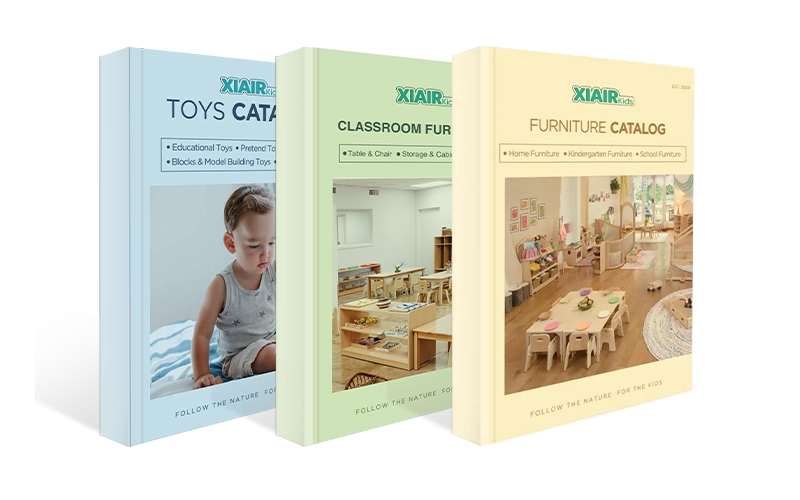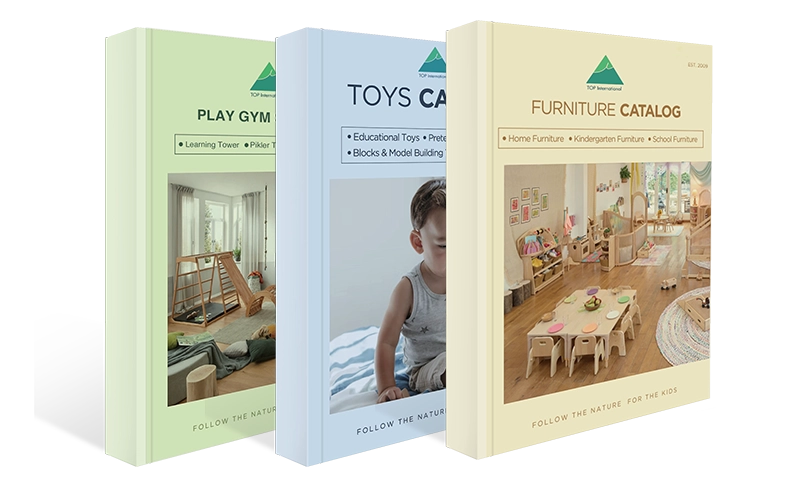¿Está preocupado por su hijo? desarrollo temprano de la alfabetización ¿Y se pregunta cómo ayudarlos a desarrollar habilidades esenciales de lectura y escritura desde una edad temprana?
Many parents and educators feel overwhelmed by the complexities of emergent literacy and how to nurture a child’s development in this crucial stage properly. Without a strong foundation in early literacy skills, children may struggle to catch up in later years, potentially affecting their academic performance and confidence in learning.
La buena noticia es que, al comprender el proceso de alfabetización emergente y participar en actividades sencillas y prácticas, puede ayudar a su hijo a desarrollar habilidades clave que lo encaminarán hacia el éxito en la lectura. Este artículo explorará la importancia de la alfabetización emergente y proporcionará estrategias y actividades prácticas para apoyar el desarrollo temprano de la alfabetización en los niños.

1. What is Emergent Literacy?
La alfabetización emergente se refiere a las habilidades, conocimientos y actitudes que los niños desarrollan al interactuar con el lenguaje escrito y hablado. Estas experiencias tempranas de alfabetización ocurren antes del inicio de la instrucción formal de lectura y escritura, a menudo durante la etapa preescolar. La alfabetización emergente en preescolar no se limita a aprender el alfabeto, sino también a desarrollar diversas habilidades.
Teoría de la alfabetización emergente de Marie Clay

Marie Clay, a renowned researcher in early childhood education, developed the emergent literacy theory. This theory is premised on the idea that children bring their unique experiences and knowledge to learning to read and write. Clay emphasized that children’s early literacy behaviors are influenced by their interactions with the world around them, including caregivers, peers, and the environment.
La teoría de Clay destaca la importancia de que los niños participen activamente en el desarrollo de su lectoescritura. Según su investigación, los niños aprenden mejor cuando están expuestos a entornos con abundante material impreso, tienen oportunidades de interactuar con libros y reciben orientación de cuidadores o educadores que modelan conductas de lectoescritura.
Definición de alfabetización emergente
La alfabetización emergente es el proceso mediante el cual los niños pequeños desarrollan la comprensión del lenguaje escrito y hablado antes de poder leer o escribir de forma independiente. Esta etapa temprana del desarrollo de la alfabetización incluye la comprensión de conceptos impresos, como el reconocimiento de letras, sonidos y palabras, y la comprensión de que la letra impresa conlleva significado.
En esencia, la alfabetización emergente consiste en sentar las bases para futuras habilidades de lectoescritura. Estas bases comienzan con la exploración del entorno por parte de los niños, la escucha del lenguaje y la interacción con adultos a través de la lectura, la conversación y el juego. Mediante estas primeras experiencias, los niños adquieren conciencia de la estructura y el uso del lenguaje, lo que los encamina hacia el desarrollo de la lectoescritura.
Su teoría ha tenido un impacto duradero en la educación de la primera infancia, influyendo en cómo los educadores abordan la enseñanza de la lectura y la escritura en la etapa emergente del desarrollo de la alfabetización.
2. The Importance of Emergent Literacy
La alfabetización emergente es esencial para el desarrollo de las habilidades de lectura y escritura posteriores. Esta sección se centrará en la relación entre la alfabetización emergente y el desarrollo del lenguaje, destacando las áreas clave que contribuyen al aprendizaje en la primera infancia, como la conciencia fonológica, la conciencia del texto impreso, la adquisición de vocabulario y el fomento del amor por la lectura.

Alfabetización emergente y desarrollo del lenguaje
La alfabetización temprana está estrechamente ligada al desarrollo del lenguaje; la alfabetización emergente y el desarrollo del lenguaje son interdependientes. Cuanto más expuestos estén los niños al lenguaje oral o escrito, mayores serán sus posibilidades de desarrollar sólidas habilidades de lectoescritura. El desarrollo del lenguaje incluye la comprensión de la gramática, la estructura de las oraciones y el vocabulario. Esta base es fundamental para preparar a los niños para leer y escribir con éxito.
Children acquire the language skills necessary to make sense of written texts later on through activities such as reading aloud, storytelling, and engaging in conversations. Listening to stories helps children understand narrative structures and expands their vocabulary, which is essential for developing literacy.

Receive a free catalog and custom layout to help you design your ideal classroom easily.
Promoción del aprendizaje en la primera infancia
Promover la alfabetización emergente es esencial para el desarrollo cognitivo y el éxito académico. Los niños son especialmente receptivos a la instrucción en lenguaje y lectoescritura durante los primeros años, por lo que fomentar la lectoescritura durante esta etapa puede tener efectos duraderos. Las experiencias tempranas de alfabetización, como escuchar libros, jugar juegos de palabras y comentar las historias, fomentan en los niños el amor por la lectura.
Además, las actividades de alfabetización emergente para preescolares fomentan este amor por el aprendizaje. Estas atractivas actividades fomentan el desarrollo del pensamiento crítico, la comprensión lingüística y las habilidades sociales, todas ellas necesarias para el éxito escolar y en la vida.
Desarrollo del lenguaje
El desarrollo del lenguaje es uno de los principales beneficios de las actividades de alfabetización emergente para niños en edad preescolar. Durante estos primeros años, los niños amplían su vocabulario y desarrollan su comprensión de la estructura del lenguaje. Actividades como rimar, cantar y contar cuentos mejoran la comprensión del lenguaje y la capacidad de comunicación de los niños.
Los cuidadores y educadores pueden contribuir significativamente al desarrollo del lenguaje de un niño al brindarle oportunidades para participar en actividades ricas en lenguaje, como leer cuentos e interactuar con otros.

Conciencia fonológica
Phonological awareness is another cornerstone of emergent literacy skills in early childhood education. Phonological awareness involves recognizing and manipulating the sounds of language. Children develop this skill through games, songs, and rhyming activities that help them identify syllables, rhymes, and individual sounds.
Esta habilidad es vital para la lectura, ya que ayuda a los niños a decodificar palabras al relacionar sonidos con letras. Por ejemplo, los niños que pueden aislar el primer sonido de la palabra "cat" (el sonido "c") están mejor preparados para leer y comprender nuevas palabras en el futuro.
Conciencia de la impresión
La conciencia de lo impreso se refiere a la comprensión del niño de que lo impreso tiene significado y se utiliza para comunicar ideas. Esto incluye reconocer que las palabras se leen de izquierda a derecha y que la escritura corresponde a la palabra hablada. Mediante actividades de alfabetización emergente, los niños aprenden que los libros tienen portada y contraportada, que las páginas se giran en una dirección específica y que las palabras forman una historia.
Animar a los niños a mirar libros, señalar palabras y hablar sobre imágenes mientras leen fomenta esta conciencia. Cuanto más interactúan los niños con los libros, más se fortalece su comprensión de la letra impresa, lo que prepara el terreno para una instrucción de lectura más formal.

Adquisición de vocabulario
Desarrollar un vocabulario sólido es un componente clave de la alfabetización emergente. El vocabulario de los niños crece mediante la interacción con adultos, la exposición a cuentos y la participación en conversaciones. Escuchar y usar palabras nuevas en diferentes contextos ayuda a los niños a comprender su significado y a aprender a usarlas eficazmente al hablar y escribir.
Desarrollar un vocabulario sólido mejora la capacidad del niño para comprender textos y expresar sus pensamientos con claridad. La adquisición de vocabulario es crucial para la lectura y la comprensión del lenguaje hablado, así como para un buen rendimiento escolar.
Amor por la lectura
Finally, one of the most critical aspects of emergent literacy is fostering a love for reading. Children who develop a positive attitude towards books and reading are likelier to engage in independent reading later in life. Reading aloud to children, exposing them to various books, and encouraging them to “read” independently are all strategies that help build this love.

3. How Children Develop Literacy?
Literacy development is a gradual, multi-stage process that begins at birth and continues into adulthood. It involves acquiring various skills, from recognizing sounds and symbols to understanding complex texts and expressing ideas through writing. Each phase of literacy development builds upon the previous one, and understanding these stages helps parents and educators provide age-appropriate support. While children progress at different rates, there are five generally recognized stages in literacy development, each marked by distinct learning milestones.
Emergent Literacy (0–5 years of age)
Children begin to understand the basics of communication and printed language during the emergent literacy stage. This phase starts from birth, as babies and toddlers are immersed in the sounds of spoken language. Through exposure to books, conversations, songs, and storytelling, children begin to grasp that language has structure and meaning. By age five, many can recognize letters, understand that text conveys information, and show interest in “reading” familiar books by memory.

Alphabetic Fluency (5–8 years of age)
As children enter school, they transition into the alphabetic fluency stage. Here, they decode words using letter-sound relationships and recognize common sight words. Children learn how letters form sounds and how these sounds form words—a critical step toward fluent reading. They also begin to write using simple sentences and invented spelling based on how words sound.

Words and Patterns (7–9 years of age)
In the words and patterns stage, children recognize patterns within words, such as prefixes, suffixes, and word families. This stage overlaps with alphabetic fluency but introduces more complex spelling and vocabulary rules. Children develop a deeper understanding of language conventions, punctuation, and grammar. They move from sounding out every word to recognizing word chunks, which increases reading speed and accuracy.

Intermediate Reading (9–15 years of age)
The intermediate reading stage shifts from “learning to read” to “reading to learn.” Children are now able to tackle more complex texts across a variety of subjects. They read for enjoyment and to gather information, analyze ideas, and think critically. At this stage, vocabulary grows rapidly as children encounter more technical and content-specific words, especially in science, history, and literature.

Advanced Reading (15 to adult)
In the advanced reading stage, literacy is no longer a skill being learned—it is a tool used for higher-level thinking, communication, and exploration. Teenagers and adults in this phase can interpret abstract ideas, analyze arguments, and read across genres and disciplines. They can form well-supported opinions, conduct independent research, and communicate ideas through sophisticated writing.

Decoding: Decoding is translating written symbols into sounds and words. It relies on understanding letter-sound relationships and is essential for early reading success. Mastery of phonics supports accurate and fluent reading.
Fluency: Fluency is reading with speed, accuracy, and proper expression. Fluent readers can focus on comprehension rather than decoding each word. Repeated reading and oral practice help build fluency.
Vocabulary: A strong vocabulary enables children to understand what they read and express themselves clearly. Vocabulary grows through conversation, reading, and exposure to diverse texts. It’s a key predictor of reading comprehension.
Sentence Structure and Cohesion: Understanding how sentences are formed and connected improves reading comprehension and writing clarity. Teaching grammar, conjunctions, and transitions helps students express ideas logically and read with better understanding.
Experience, Reasoning, and Background Knowledge: Prior knowledge and life experiences shape how children understand texts. The more they know, the easier it is to make inferences, draw conclusions, and connect new ideas to existing ones.
Working Memory and Attention: Working memory allows children to hold and process information while reading, while attention helps them stay focused. Both are critical for understanding longer texts, following plots, and completing reading tasks effectively.
4. Suitable Emergent Literacy Activities for Preschoolers
Developing emergent literacy skills during preschool is essential to building a strong foundation for future reading and writing. Young children learn best through play, repetition, and interaction, making choosing engaging, developmentally appropriate activities rooted in language-rich experiences essential.
Juegos de conciencia fonológica
Games like rhyming, clapping syllables, or “I Spy” with sounds enhance children’s ability to hear and manipulate language. These skills are essential for decoding words later on. Keep it playful and consistent for maximum effect. Try tongue twisters or simple chants to reinforce beginning sounds. Sort objects or pictures by their starting sounds for a hands-on experience. Encourage children to create their own rhymes or silly sound combinations.
Actividades de escritura interactiva
Let children draw, scribble, or “write” their own stories. Offer crayons, markers, and writing prompts. Encourage them to talk about what they’re drawing or “reading” back their stories. Introduce name-writing early to personalize their writing journey. Use story starters to inspire creativity and encourage sentence building. Allow invented spelling to be a natural part of early writing development.
Actividades de reconocimiento del alfabeto
Use songs, flashcards, and magnetic letters to teach letter names and sounds. Focus on the letters in the child’s name first. Make learning multisensory with hands-on materials and repetition to help retention.
Incorporate movement by having children form letters with their bodies or in sand. Play alphabet matching or memory games to reinforce recognition. Create letter-of-the-week activities to focus on one sound at a time.

Exploración de la conciencia de la impresión
Label everyday items around the house or classroom. Point out signs, menus, and packaging to show how print is used. Let children help write grocery lists or notes. Use daily routines—like setting the table or cleaning up—as opportunities to spot and use print. Provide books with clear print and point to words as you read aloud. Encourage children to notice environmental print, like store logos or street signs.
Take Your Time
When reading, pause to discuss the pictures, repeat new words, and allow your child to ask questions. Rather than rushing through a story, encourage your child to predict what will happen next or retell it in their own words. These actions develop comprehension, sequencing skills, and vocabulary. The same goes for routine tasks—describe what you are doing, name objects, and allow children to respond. The more time you give for these interactions, the deeper their engagement and learning.
Build on Their Words
Children often say the most imaginative things. Use those moments as opportunities to build their language and literacy skills. When your child says a word or a sentence, expand on it. For example, if a child says, “dog bark,” you might respond, “Yes, the big brown dog is barking loudly because he hears a noise.” This affirms the child’s words and introduces them to new vocabulary, sentence structure, and ideas.
Let Your Child “Write”
Ask them to “read” their writing to you, even if it’s just a string of marks or drawings. This builds confidence and reinforces the concept that writing is a way to express thoughts. As children gain more control over their fine motor skills, guide them gently towards forming shapes and letters, starting with the letters in their names. You can also use tools like sand trays, finger paints, or salt writing boards to make writing more sensory and fun. Activities that develop fine motor coordination—like playing with playdough, stringing beads, or using tongs—also support the physical skills needed for writing.
Play Word Games
Word play is a fun and effective way to build phonological awareness, which is the ability to recognize and manipulate the sounds in words—a critical skill for learning to read. Depending on your child’s age and development, you can adjust the complexity of the games.
Babies
Word games focus on sound exposure and listening for babies. Sing nursery rhymes, talk about what you’re doing, and play peekaboo while emphasizing specific words. Babies are naturally drawn to rhythm and repetition, which supports language learning. Name body parts, toys, and actions throughout the day to build their receptive vocabulary.
Toddlers
With toddlers, begin introducing rhyming games and songs. Use fingerplays like “Itsy Bitsy Spider” or “Wheels on the Bus” that incorporate movements and rhymes. Ask them to find objects that rhyme or start with a specific sound. Repeat their responses and add more detail to keep them engaged and learning.
Preschoolers
Preschoolers can begin playing more structured word games. Try “I Spy” with sounds like “I spy something that starts with the ‘b’ sound.” Introduce alliteration and let them devise silly phrases like “Sammy snake sips soup.” You can also play matching games with picture cards, where they match images based on beginning sounds or rhyming words.
These games build awareness of how language sounds and functions, providing a strong foundation for decoding words when they begin to read.

5. How to Promote Emergent Literacy in the Classroom?
Promoting emergent literacy in the classroom is essential to creating a strong foundation for children’s future reading and writing abilities. As educators, creating an environment that supports the development of language, phonological awareness, and print concepts is crucial. Below, we’ll explore several classroom strategies for promoting emergent literacy.
Establecer rutinas
Establecer rutinas consistentes es una de las maneras más efectivas de promover la alfabetización emergente en el aula. Las rutinas brindan seguridad a los niños y les ayudan a comprender la estructura del día, lo que a su vez promueve el aprendizaje. Una rutina predecible también les permite practicar la alfabetización durante las actividades diarias.
For instance, you can create a morning routine where children have time to engage with books. Start the day by reading aloud a simple, engaging story. During circle time, you could introduce new vocabulary words, ask children to repeat after you, and practice letter recognition by pointing to the letters in the room. As children become familiar with these routines, they will naturally pick up language skills, especially when they can predict what comes next.
Another key part of establishing routines is to incorporate repetitive language. During daily activities, songs, rhymes, and familiar phrases can significantly help reinforce phonological awareness, a key component of emergent literacy. When children hear rhymes or repeat words in songs, they begin recognizing patterns in language, which strengthens their early reading skills.
Leer a menudo
Leerles en voz alta a los niños con regularidad es una de las maneras más efectivas de promover la alfabetización emergente. Las sesiones de lectura frecuentes exponen a los niños a nuevo vocabulario, estructuras oracionales y formatos de cuentos, ya sean libros ilustrados cortos o cuentos más largos.
En el aula, establezca una rutina diaria de lectura. Dedique momentos específicos a leer en voz alta a los niños y proporcióneles una variedad de libros que cubran diferentes temas, géneros y niveles de complejidad. Durante la lectura, enfatice conceptos clave como los nombres de los personajes, la secuencia de eventos y conceptos básicos de la letra impresa, como la direccionalidad de la lectura (de izquierda a derecha).
Además, es fundamental que la lectura sea una experiencia colaborativa. Anime a los niños a interactuar con el texto haciéndoles preguntas sobre la historia, permitiéndoles predecir qué sucederá después e incluso invitándolos a "leer" las imágenes. Esta interacción mejora su comprensión y su conocimiento de la palabra escrita, a la vez que despierta su interés por la lectura.
Practique las habilidades del lenguaje oral
Centrarse en el desarrollo de las habilidades del lenguaje oral en el aula es fundamental para la alfabetización emergente. Los niños que pueden expresar sus pensamientos con claridad y poseen un vocabulario amplio están mejor preparados para comprender el lenguaje escrito.
Para fomentar las habilidades del lenguaje oral, brinde oportunidades para que los niños participen en conversaciones estructuradas y no estructuradas. Durante el juego, fomente conversaciones donde los niños expresen sus pensamientos, sentimientos y observaciones. Hacer preguntas abiertas como "¿Qué crees que pasará después?" o "¿Cómo te hace sentir esta historia?" ayuda a los niños a desarrollar el lenguaje expresivo y a practicar la formación de oraciones.
You can also engage children in oral storytelling activities. Ask them to create stories based on images or experiences. This helps build language skills and encourages creativity and narrative thinking, which are foundational for later reading comprehension.

Fomentar la conversación
Fomentar la conversación entre niños es vital para promover la alfabetización emergente. Las interacciones con sus compañeros les brindan oportunidades para practicar habilidades lingüísticas en contextos sociales. Las conversaciones les ayudan a comprender la importancia de la comunicación, a desarrollar la capacidad de tomar turnos y a aprender a escuchar atentamente.
En el aula, cree oportunidades para que los niños compartan sus experiencias e ideas. Las discusiones en grupo, las actividades en parejas y los proyectos colaborativos permiten que los niños amplíen su vocabulario y adquieran confianza en el uso del lenguaje.
Para facilitar esto, cree un entorno seguro e inclusivo donde todos los estudiantes se sientan cómodos hablando. Anime a los niños a hacer preguntas, conectar con sus conocimientos previos y escuchar a sus compañeros. Cuanto más conversen los niños, más fluidez y comodidad desarrollarán con el idioma.
Incorporar actividades de preescritura
Antes de que los niños puedan aprender a escribir, necesitan desarrollar la motricidad fina y las capacidades cognitivas necesarias para comprender el lenguaje escrito. Las actividades de preescritura son una parte vital de la alfabetización emergente, ya que ayudan a los niños a prepararse para las exigencias físicas y mentales de la escritura.
Empiece incorporando actividades que fomenten la coordinación ojo-mano y la motricidad fina, como trazar formas, dibujar líneas y practicar el uso de herramientas de escritura. Utilice actividades como dibujar, colorear y recortar para desarrollar estas habilidades de forma divertida e interactiva.
Additionally, pre-writing activities should include exercises that help children understand how written language works. Provide opportunities for them to “write” their own stories through scribbling or drawing, which allows them to know the purpose of writing. Labeling objects in the classroom and encouraging children to create their own labels or captions will reinforce their understanding of print concepts.

6. Early Parental Intervention is Critical
Promoting emergent literacy at home is one of the most potent ways parents and caregivers can support a child’s early development. Children absorb language and literacy skills long before formal education begins through everyday interactions, routines, and play. With just a few intentional practices, families can create an environment fostering the foundational skills needed for success in reading and writing.
Start by reading aloud daily. This is one of the most effective and enjoyable ways to build a child’s vocabulary, comprehension, and print awareness. Choose age-appropriate books with colorful illustrations, rhythmic text, and engaging stories. Make it interactive—ask your child questions about the story, encourage them to describe the pictures, and let them turn the pages.
Create a print-rich environment in your home. Label everyday objects such as furniture, toys, or kitchen items to help children recognize that print carries meaning. Keep various books within easy reach, and dedicate a cozy reading nook that invites your child to explore books independently.
Talk with your child often. Regular conversation builds language skills and introduces new words in context. Narrate your daily routines, describe your actions, and encourage your child to ask and answer questions. Listening and speaking are essential building blocks for later reading success.
Introduce pre-writing activities to develop fine motor skills and early writing habits. Offer crayons, markers, and paper for your child to draw and “write.” Praise their efforts, whether they’re scribbling or attempting to write letters. Please encourage them to write names, label drawings, or make pretend lists.
Sing songs, recite rhymes, and play word games. These activities build phonological awareness, helping your child hear and manipulate the sounds in words. Simple games like clapping syllables or finding rhyming words make learning fun and effective.
Finally, model a love for reading and writing. Let your child see you read books, write lists, or jot down notes. Your enthusiasm will influence their attitude toward literacy. When children know that reading and writing are valued in daily life, they’re more likely to engage with them themselves.
By weaving these simple yet powerful practices into daily routines, you can actively support your child’s emergent literacy development and lay the groundwork for lifelong learning.

7. Difference Between Early Literacy and Emergent Literacy
Understanding the difference between early and emergent literacy is essential for educators, parents, and caregivers. Both are integral stages of a child’s literacy development, but focus on different skills and concepts. Below is a comparison of the two.
| Aspecto | Alfabetización temprana | Alfabetización emergente |
|---|---|---|
| Definición | La alfabetización temprana abarca las habilidades y conocimientos que los niños desarrollan como preparación para la lectura y la escritura formales. Se centra en habilidades como el conocimiento del alfabeto y la conciencia fonémica. | La alfabetización emergente es la etapa previa a la capacidad de los niños para leer o escribir de forma independiente. Abarca las habilidades fundamentales que contribuyen a la lectura y la escritura, como la comprensión del texto impreso y el desarrollo del vocabulario. |
| Enfocar | La alfabetización temprana se centra más en aprender a leer y escribir. Implica habilidades específicas como decodificar palabras y escribir oraciones. | La alfabetización emergente se centra en las bases de la lectura y la escritura, incluida la comprensión del lenguaje hablado y escrito, el reconocimiento de letras y la ampliación del vocabulario. |
| Habilidades incluidas | Habilidades como el reconocimiento de letras, la conciencia fonémica y la comprensión de conceptos impresos. | Habilidades como reconocer los sonidos del lenguaje (conciencia fonológica), comprender la letra impresa y formar patrones lingüísticos tempranos. |
| Rango de edad | Generalmente se desarrolla en niños de 4 a 6 años cuando comienzan la educación formal. | Comienza desde el nacimiento y continúa durante los años preescolares, preparando el escenario para el desarrollo de la alfabetización formal. |
| Enfoque de aprendizaje | Implica enseñanza estructurada y aprendizaje formal, como instrucción fonética y práctica de escritura a mano. | El aprendizaje es más informal y se centra en la interacción con el entorno, el juego del lenguaje y la exploración de libros. |
Comprender estas distinciones ayuda a identificar las estrategias de desarrollo adecuadas para el crecimiento de la alfabetización de un niño en el momento adecuado.

Receive a free catalog and custom layout to help you design your ideal classroom easily.
Highly recommended books on emergent literacy
Certainly! Here are some highly recommended books on emergent literacy suitable for parents, educators, and caregivers aiming to support early reading and writing development in young children:
Professional Resources
- Emergent Literacy and Language Development: Promoting Learning in Early Childhood by Paula M. Rhyner
This book offers practical strategies and research-based insights for fostering language and literacy skills in early childhood settings. - Engaging Children with Print: Building Early Literacy Skills through Quality Read-Alouds by Laura M. Justice and Amy Sofka
A guide that emphasizes the importance of interactive read-alouds in developing children’s print knowledge and vocabulary. - Emergent Literacy: Writing and Reading, edited by William H. Teale and Elizabeth Sulzby
A comprehensive collection of research articles explores reading and writing development in young children. - Emergent Literacy: Lessons for Success by Sonia Q. Cabell
This resource provides evidence-based practices and lesson plans to support emergent literacy in early learners. - Assessment in Emergent Literacy by Khara L. Pence Turnbull and Laura M. Justice
A detailed guide on assessing young children’s literacy development to inform instruction and intervention.
Children’s Books for Emergent Readers
- Chicka Chicka Boom Boom by Bill Martin Jr. and John Archambault
An engaging alphabet rhyme book that introduces letters in a fun and memorable way. - Brown Bear, Brown Bear, What Do You See? by Bill Martin Jr. and Eric Carle
A repetitive and rhythmic book that helps children anticipate and recognize patterns. - Good Night, Gorilla by Peggy Rathmann
A nearly wordless book that encourages storytelling and vocabulary development through illustrations. - The Biscuit Series by Alyssa Satin Capucilli
Repetitive and straightforward text is ideal for building confidence in early readers. - Bob Books: Set 1 – Beginning Readers by Bobby Lynn Maslen
A series designed to introduce young readers to phonics and basic sentence structures.
Preguntas frecuentes
1. ¿Cuáles son las diferencias entre la alfabetización temprana y la alfabetización emergente?
La alfabetización temprana se centra en habilidades de lectura y escritura, como la fonética y el reconocimiento de letras. En cambio, la alfabetización emergente implica habilidades fundamentales, como la conciencia fonológica y la comprensión del texto impreso, que se desarrollan antes de la lectura y la escritura formales.
2. ¿Por qué es importante la participación de los padres para la alfabetización emergente?
La participación de los padres es crucial porque proporciona un ambiente rico en alfabetización en el hogar, ayudando a los niños a desarrollar habilidades lingüísticas, vocabulario y un amor por la lectura, que son esenciales para el desarrollo posterior de la alfabetización.
3. ¿Cuáles son algunas estrategias para promover la alfabetización emergente en el aula?
Las estrategias eficaces incluyen leer en voz alta con regularidad, fomentar las conversaciones, establecer rutinas e incorporar actividades previas a la escritura, como dibujar y trazar, para apoyar el desarrollo del lenguaje y las habilidades motoras.
4. ¿Cuándo comienza la alfabetización emergente?
La alfabetización emergente comienza al nacer, cuando los niños se exponen al lenguaje, los sonidos y las interacciones. Continúa durante la edad preescolar, a medida que desarrollan habilidades fundamentales como el reconocimiento de letras y la comprensión del concepto de la letra impresa.
5. ¿Cuál es la mejor manera de fomentar la alfabetización emergente?
La mejor manera de fomentar la alfabetización emergente es leer en voz alta con regularidad, involucrar a los niños en conversaciones y brindar un entorno rico en material impreso con libros, etiquetas y actividades lingüísticas interactivas.
6. ¿Cómo apoyar la alfabetización emergente?
Apoye la alfabetización emergente estableciendo rutinas de lectura diarias, promoviendo la conciencia fonológica a través de juegos, fomentando el dibujo y la escritura y fomentando el amor por los libros a través de la narración interactiva.
Conclusión
La lectoescritura emergente es crucial en el desarrollo de la primera infancia, sentando las bases para futuras habilidades de lectura y escritura. Comienza desde el nacimiento y continúa durante la etapa preescolar, a medida que los niños desarrollan habilidades clave como la conciencia fonológica, la conciencia del texto impreso y el vocabulario. Padres y educadores pueden establecer rutinas, leer en voz alta con regularidad, participar en conversaciones y ofrecer actividades de preescritura para promover la lectoescritura emergente. Un entorno propicio para la lectoescritura, tanto en casa como en el aula, fomenta el amor por los libros y apoya el desarrollo del lenguaje. Comprender la distinción entre la lectoescritura temprana y la lectoescritura emergente permite implementar estrategias específicas que garantizan que los niños desarrollen habilidades de lectoescritura sólidas y duraderas desde una edad temprana. Ayudamos a los niños a prepararse para el éxito académico y el aprendizaje permanente mediante el apoyo a la lectoescritura emergente.







